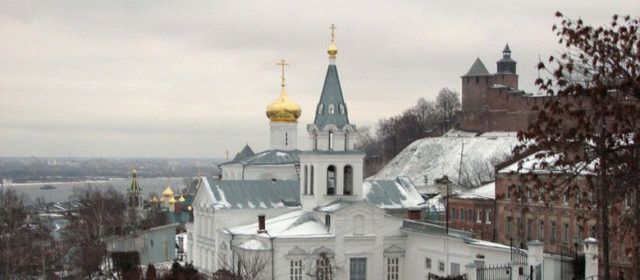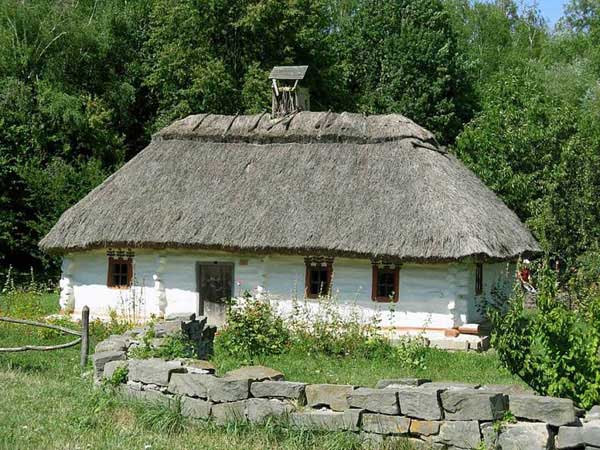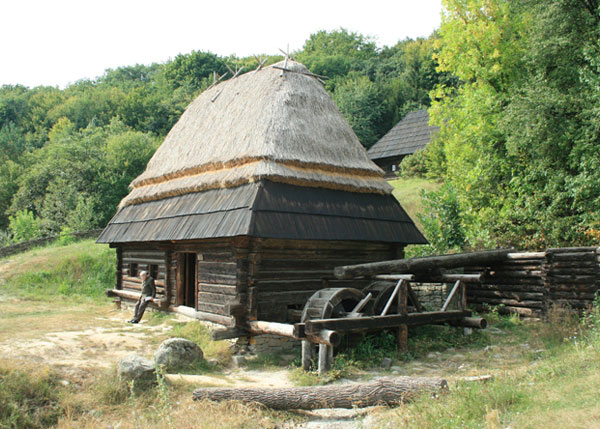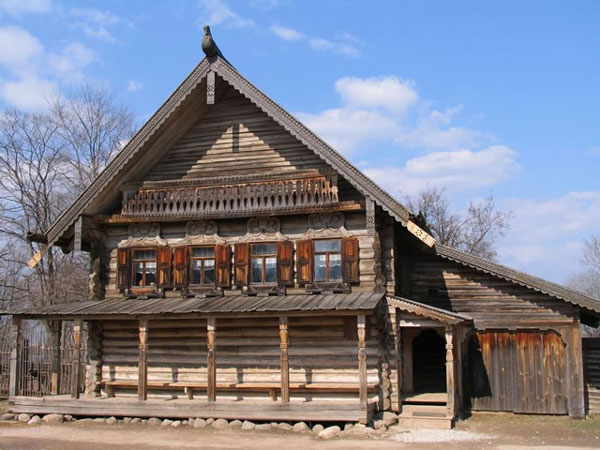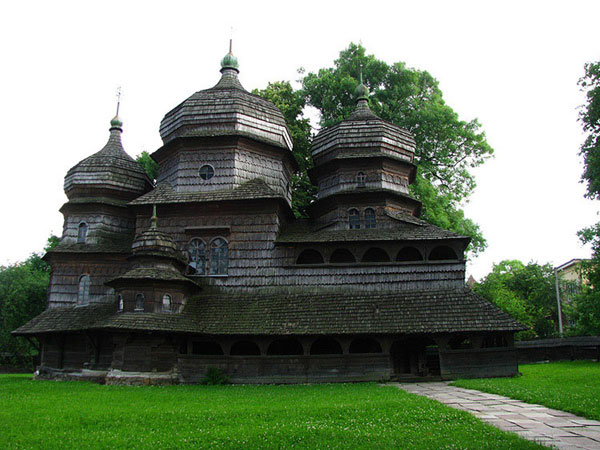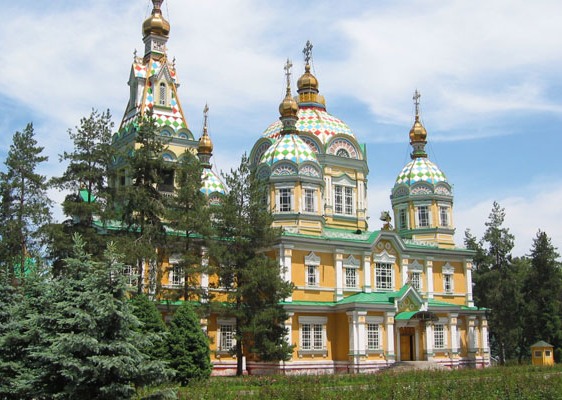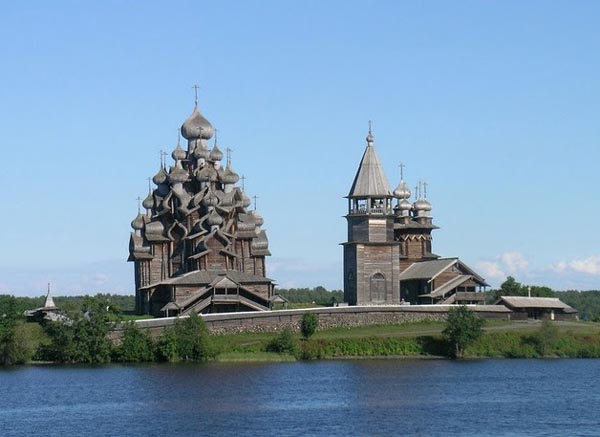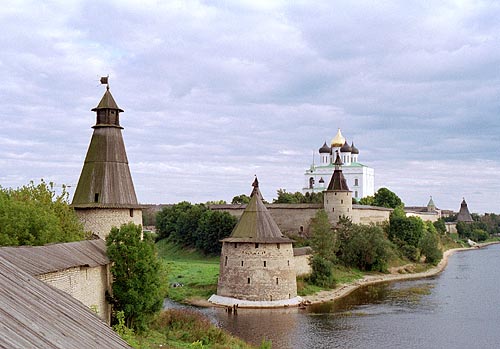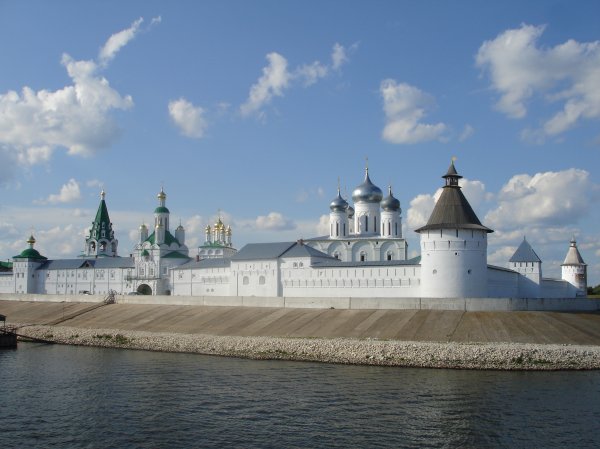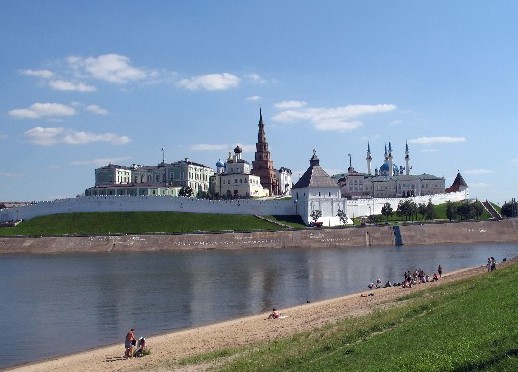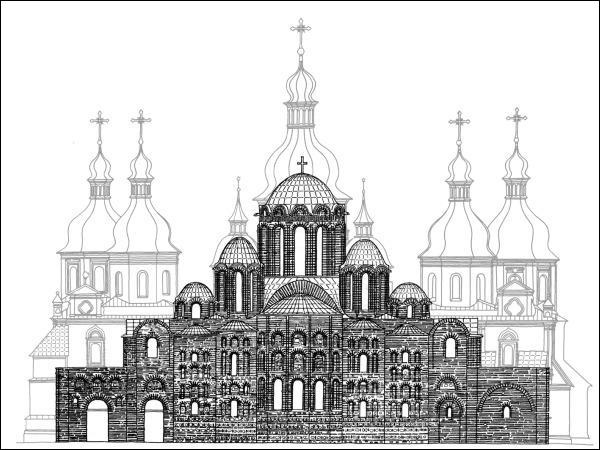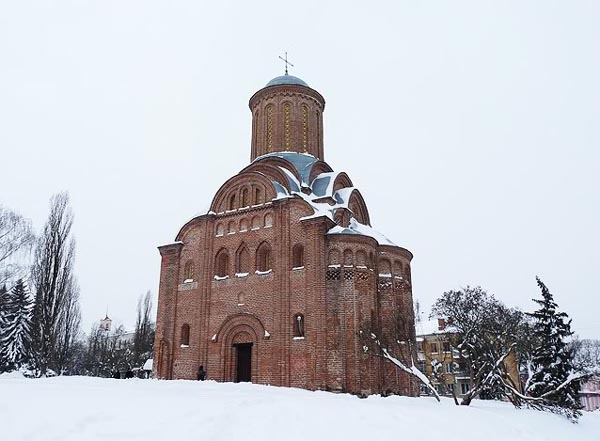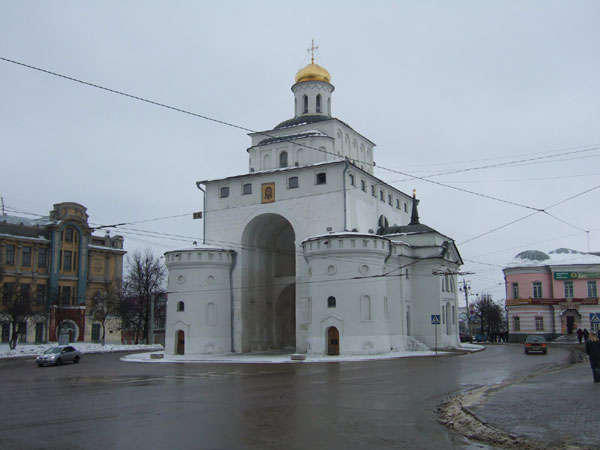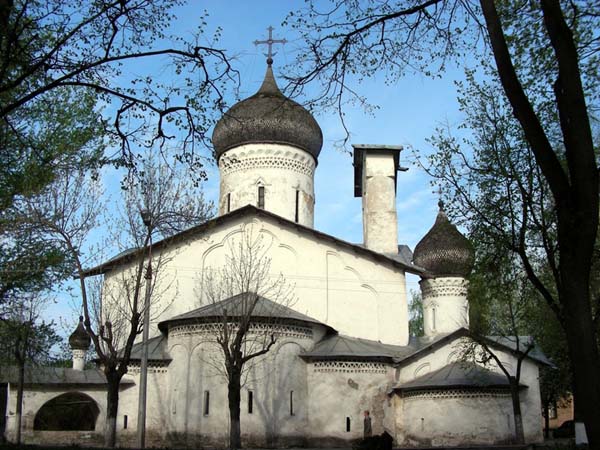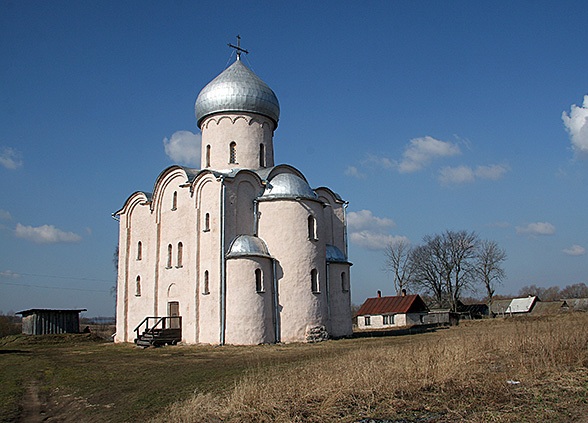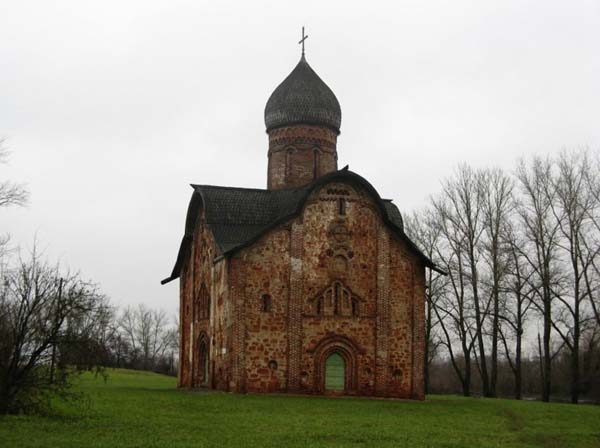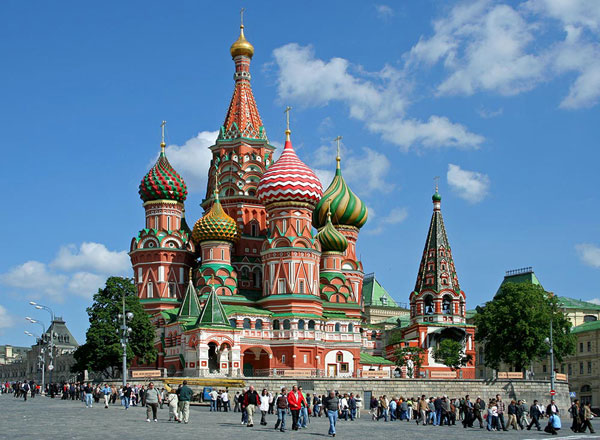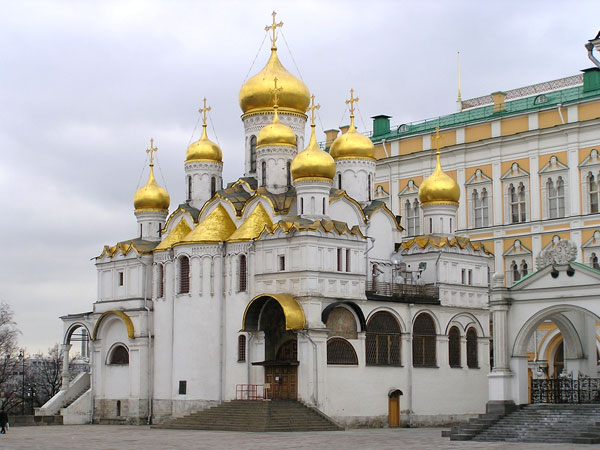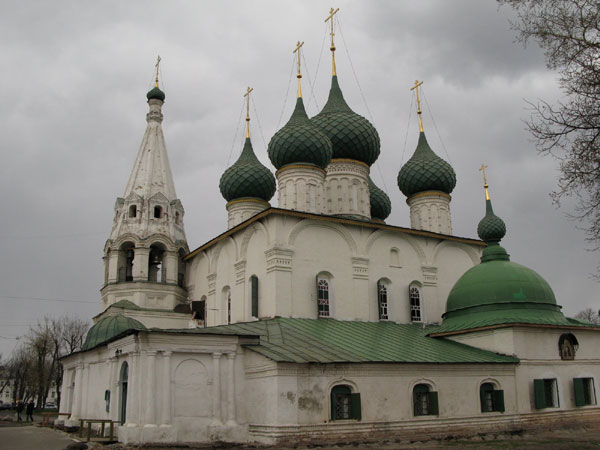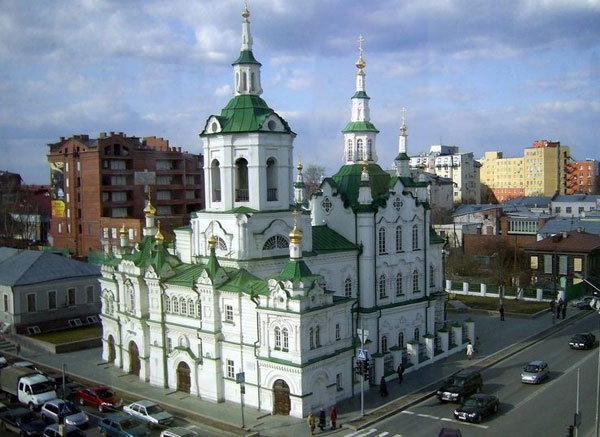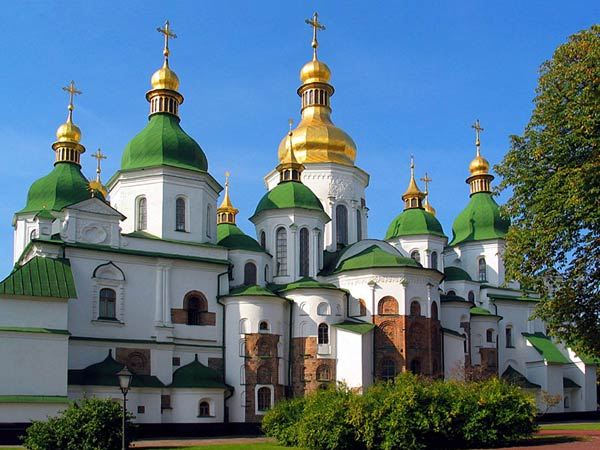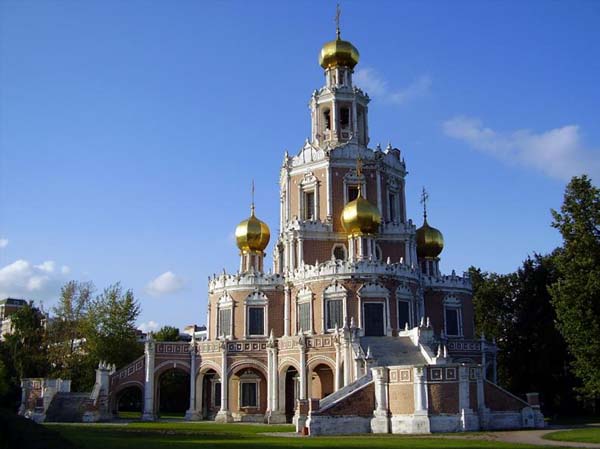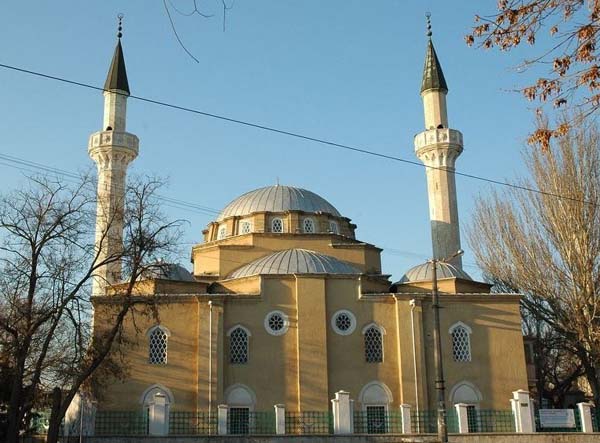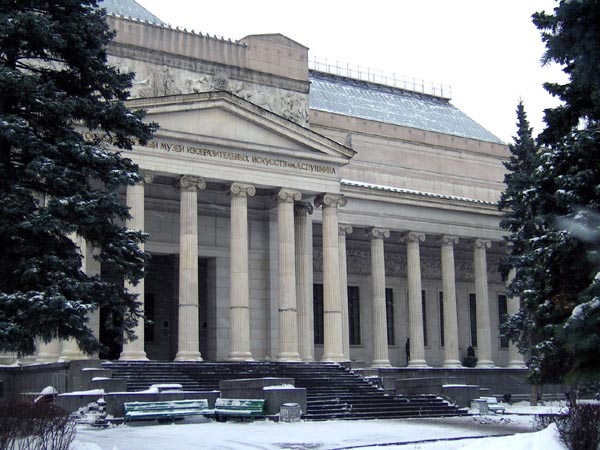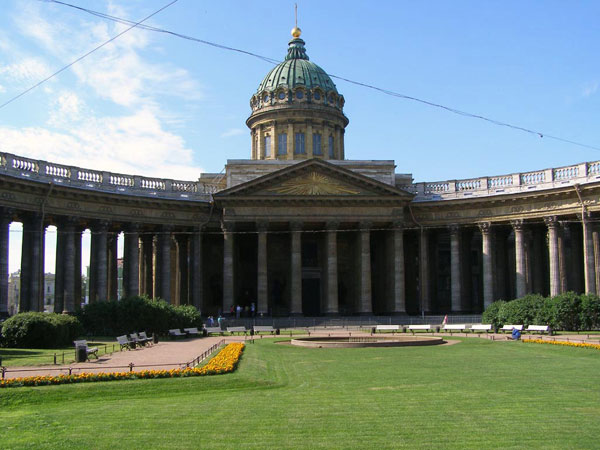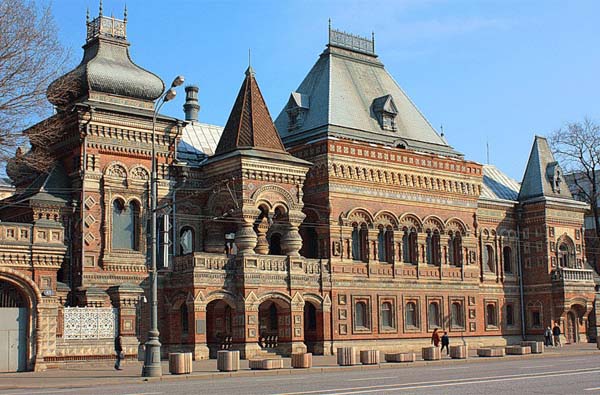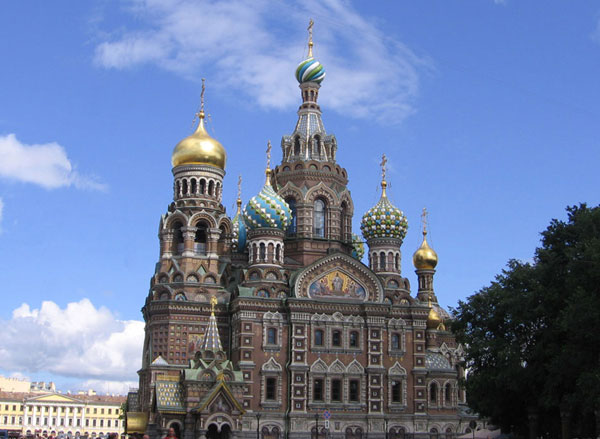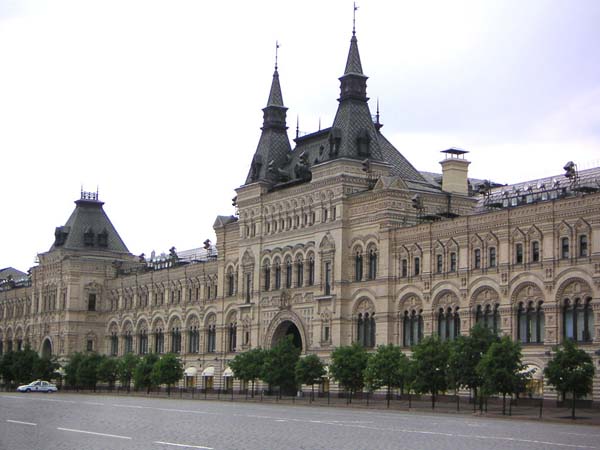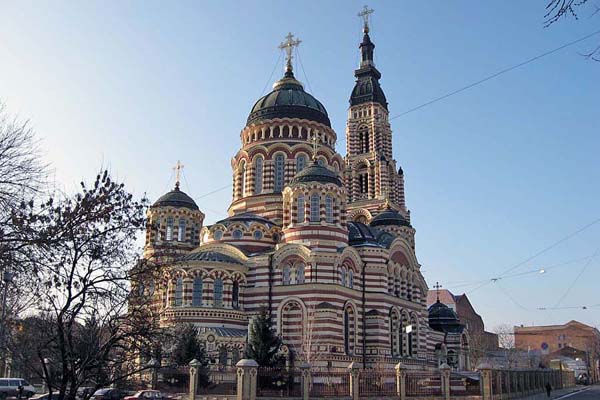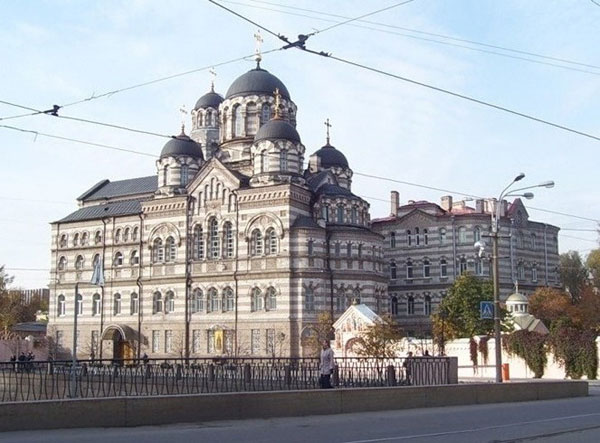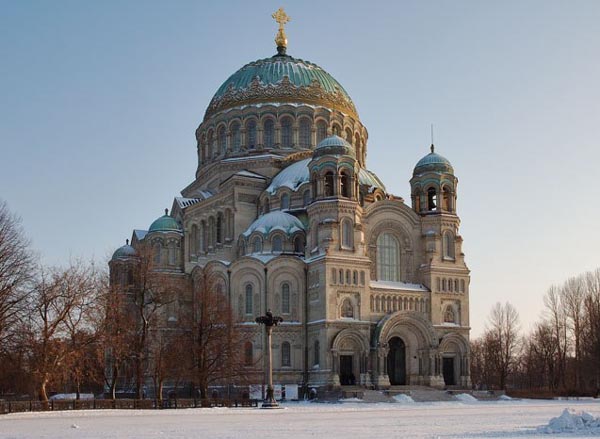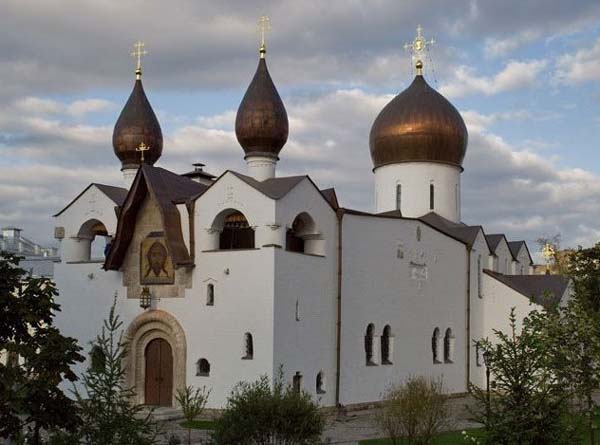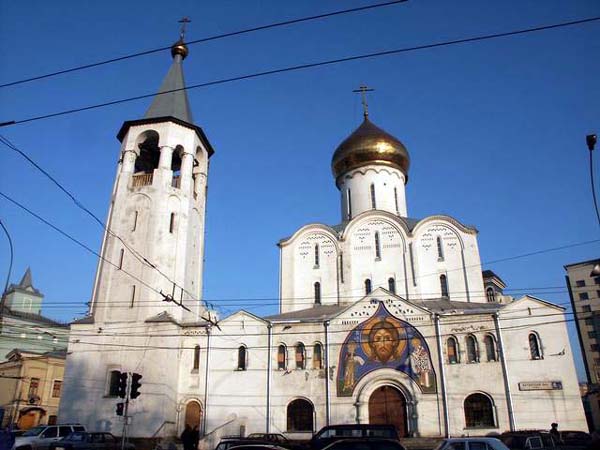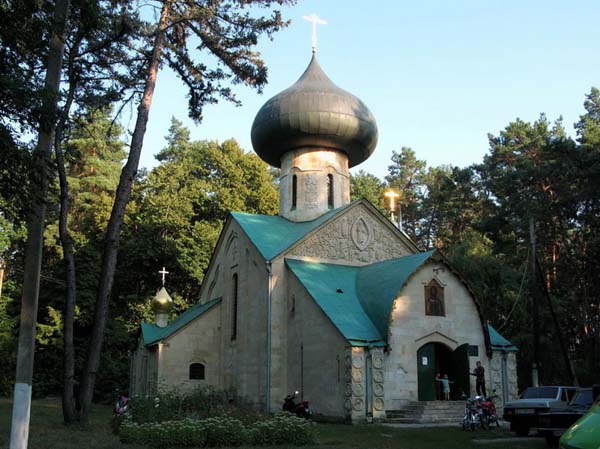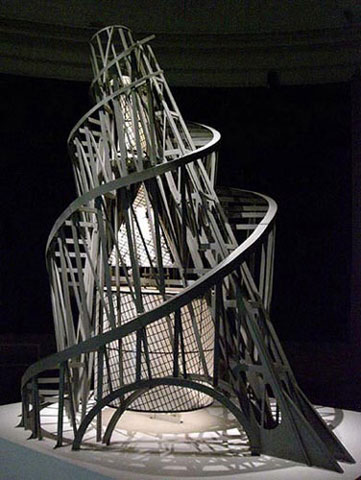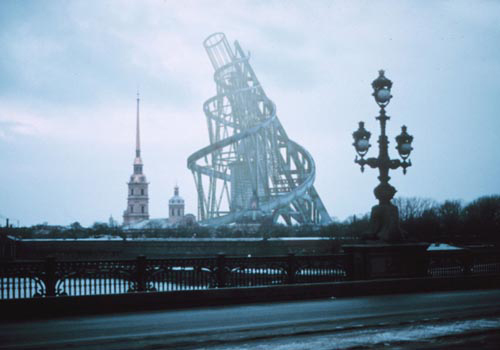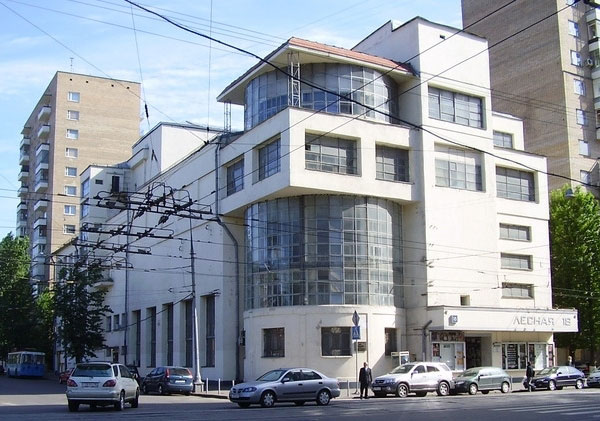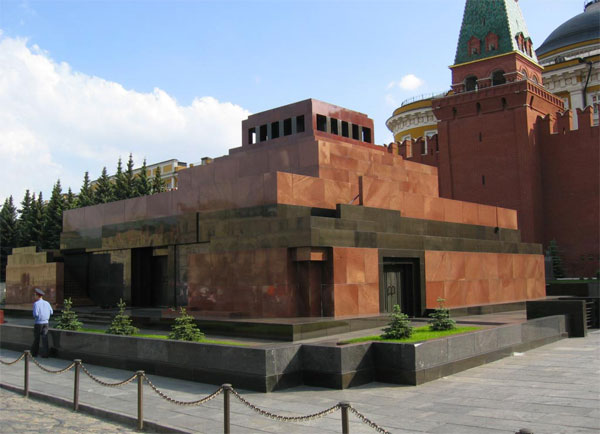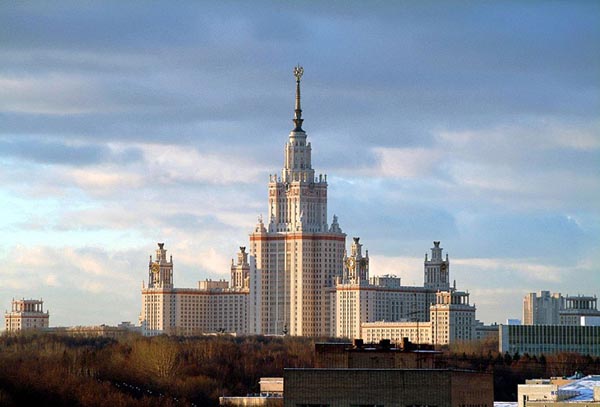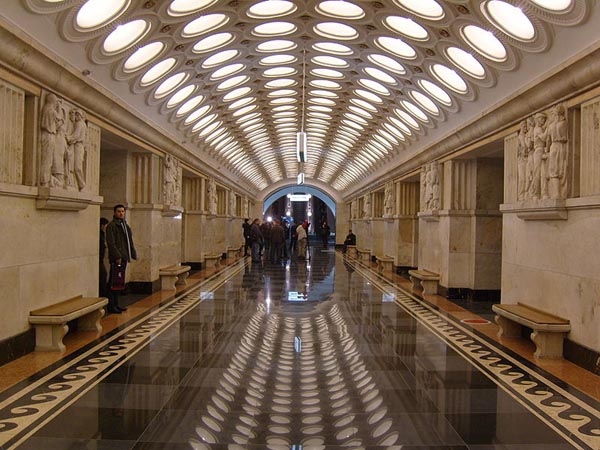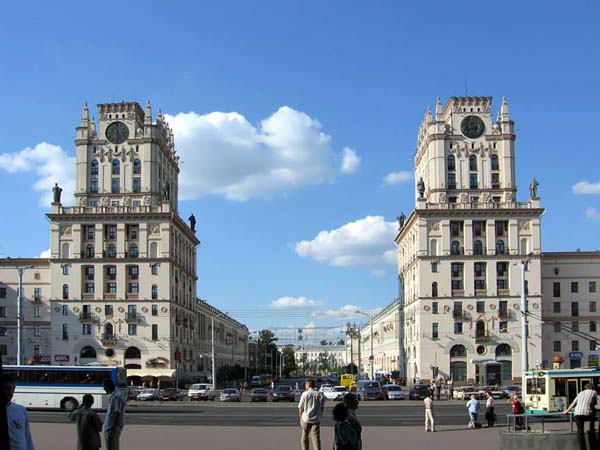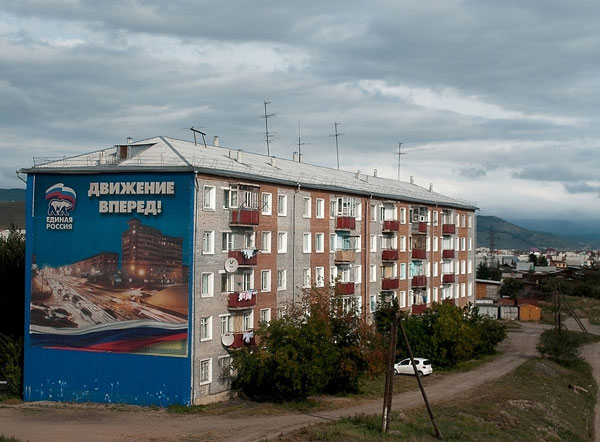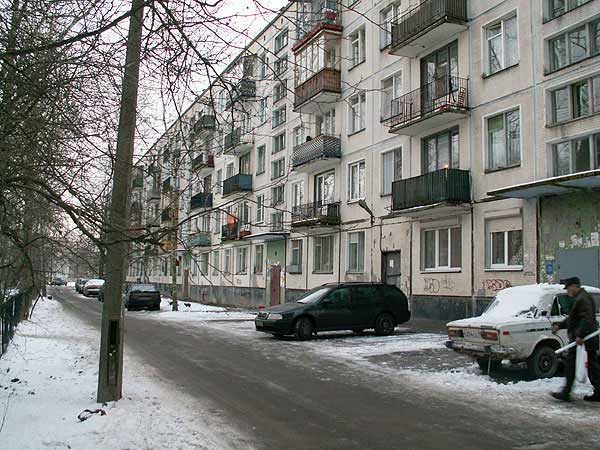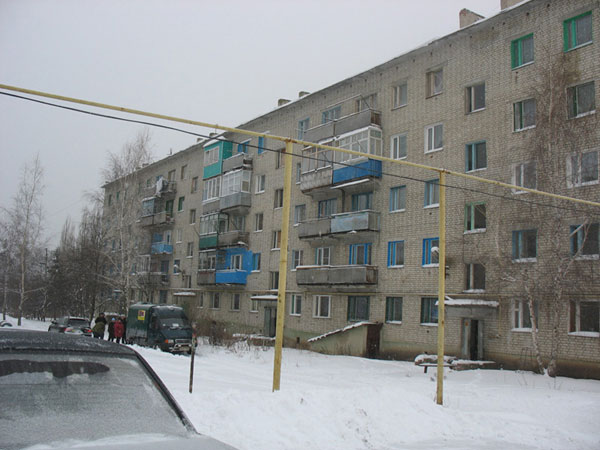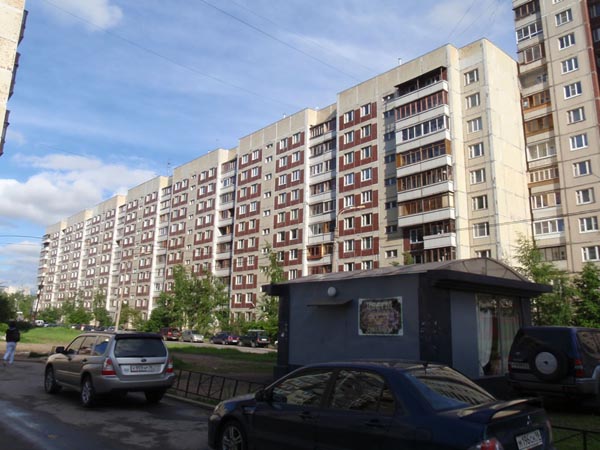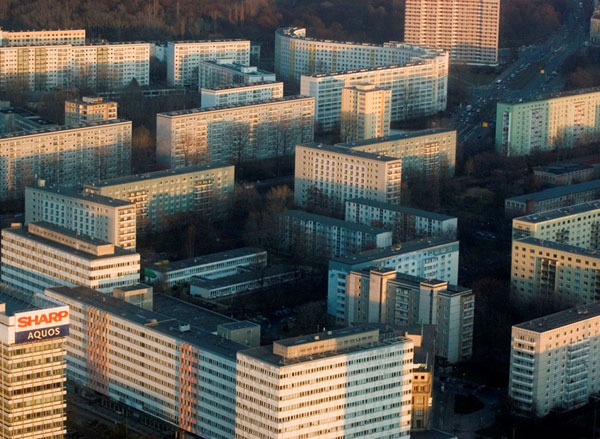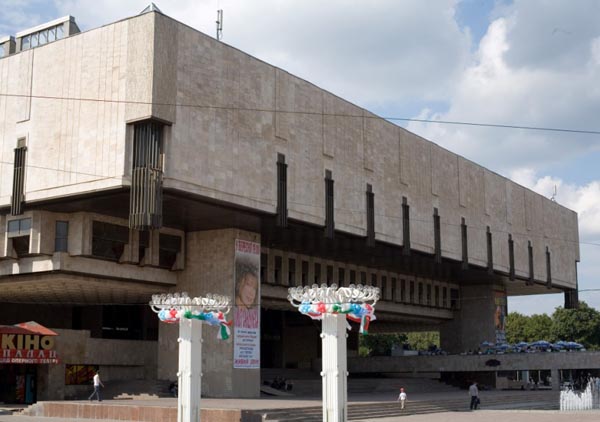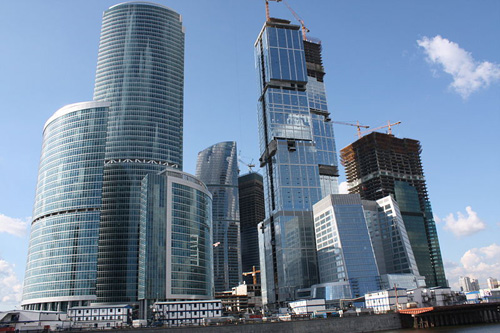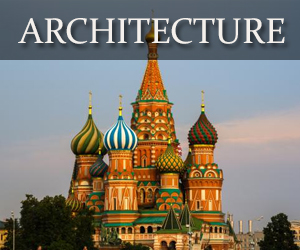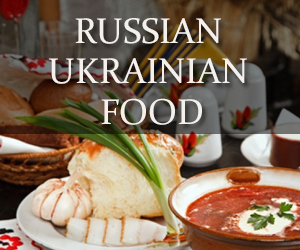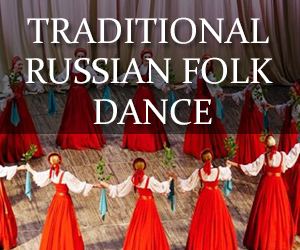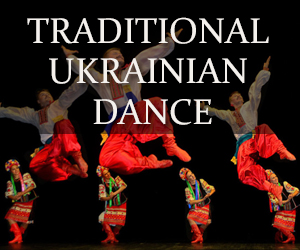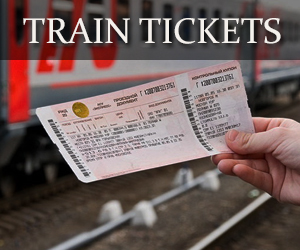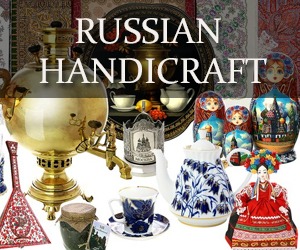Foreigners are often unfamiliar with Russian and Ukrainian architecture. Most everyone knows about the onion domed cathedrals and the dull and dreary construction from the Soviet era, but little else. The truth is, Russia and Ukraine have gone through many periods of architectural development, from wooden-vernacular architecture that predates Kiev Rus’, to 21st century skyscrapers that are starting to dominate Moscow’s skyline. Even the Soviet era, which has gained a rather negative stereotype, managed to construct many great architectural wonders.
Vernacular Architecture
Vernacular Architecture includes non-professional, civilian constructed buildings including homes, granaries, workshops, windmills, etc. Also known as folk or traditional architecture, construction skills were based on local traditions and knowledge handed down generation to generation. Wood, clay and thatched roofs were primary building materials in most vernacular architecture of Russian and Ukrainian peasants.
Wooden Churches
While masonry churches were predominate in urban areas, wooden churches were more common in Russian and Ukrainian villages. In the tradition of vernacular architecture, construction skills were passed through the generations. The most captivating of these churches were built without the use of nails. Made of scribe-fitted horizontal logs and/or lumber with interlocking corner joinery, these structures have proven to be most durable. In fact, Saint Ascension Cathedral in Almaty (yellow and green in photo), was one of just a few structures to survive a massive 10 pts on the Richter scaleearthquake in 1911.
- Saint George Church (15th cent.)
- Drohobych, Ukraine
- Church of Annunciation (1587)
- Kolomyia, Ukraine
- Holy Spirit Church (1598)
- Rohatyn, Ukraine
- Church of the Assumption (1623)
- Pistyn village, Ukraine
- Birth of Virgin Mary
Church (17th cent.)
- Vorokhta, Ukraine
- Old Ascension Church (1717)
- Torzhok, Tver Oblast
- Kazan Chapel from Ilim Fortress (1679)
- Taltsy, Irkutsk Oblast
- Assumption Church
(1674)
- Varzuga, Murmansk Oblast
- Kizhi Pogost
(18th century)
- Karelia, Russia
- Saint Ascension Cathedral
(20th cent.)
- Almaty, Kazakhstan
Kremlins and Fortified Monasteries
Kremlin refers to a central fortress or citadel that was built as a means of defense for the adjoining Russian city. Within surrounding walls, towers and battlements of the kremlin you would typically find a palace, cathedrals, government offices and munitions stores. Religious monasteries also constructed fortified walls as a means of defense. While many of these historical forts are now in ruins or virtually non-existent (particularly old wood fortifications), some have been preserved and are well worth a visit.
- Moscow Kremlin
- (Veliky) Novgorod Kremlin
- Kazan Kremlin
- Suzdal Kremlin
- Solovetsky Monastery
- Pskov Fortress
- Makaryev Convent (former Monastery)
- Astrakhan Kremlin
- Nizhny Novgorod Kremlin
- Trinity Lavra of St. Sergius
- Ivangorod Fortress
- Oreshek Fortress (Leningrad Oblast)
- Fortress of Ladoga (Leningrad Oblast)
- Alexandrov Kremlin
- Kirillo-Belozersky Monastery
- Monastery of Saint Euthymius
- Novodevichy Convent (Moscow)
- Joseph-Volokolamsk Monastery
- Rostov Veliky Kremlin
- Smolensk Kremlin
- Tobolsk Kremlin
- Tula Kremlin
- Zaraysk Kremlin
- Pskovo-Pechersky Monastery
- Korela Fortress (Leningrad Oblast)
- Voskresensky Monastery (Istra)
- Izborsk Kremlin (Pskov Oblast)
Architecture of Kievan Rus’
The churches of Rus’, built after the adoption of Christianity in 988, were strongly influenced by the Byzantine architecture. Only a handful of churches predating the 13th century Mongol invasion have survived to present. Those that weren’t destroyed, like Saint Sophia Cathedral to the left, were externally rebuilt in Baroque style (see pic below of its current Ukrainian Baroque shell). One of the few truly authentic examples of Kievan Rus’ architecture (despite 18th century restoration) is the Golden Gates of Vladimir (1158-1164), below.
- Saint Sophia Cathedral, Kiev
- 1037 (restored in Baroque 1740)
- Golden Gate in Kiev, Ukraine
- 1037 (1982 reconstruction)
- Pyatnitskaya
Church, Chernigov
- 1198-1199 (restored 1943-1962)
- Church of St. Basil, Ovruch
(Ukraine)
- 12th cent. (restored 1907-1911)
- Golden Gate in Vladimir, Russia
- 1158-1164 (18th cent. restoration)
- Church of the Intercession on the Nerl
- 1158-1165 (Bogolyubovo, Russia)
Novgorod and Pskov Schools of Architecture
The 1237-1240 invasion of Rus’ by the Mongolians postponed the advancement of East Slavic architecture by several generations. Two bastions of Rus’ that escaped the Mongol invasion, were Novgorod and Pskov. While it wasn’t the most prosperous of times (due to a loss of their main economic partners), each school continued to build cathedrals, preserving and developing their own unique style.
- Boris and Gleb Church (1536)
- Church of the Myrrh-Bearers (1537)
- Church of the Nativity of Christ (1630)
- Our Saviour on-Nereditsa (1198)
- St. Martyr Prokopius on-Torg (1537)
- Sts. Peter & Pavel in Kogevniki (1406)
- Church of the Life-Giving Trinity (1557)
- Theodore Stratelates on-Stream (1361)
- Transfiguration on-Iliyina Street (1374)
- Saint Simeon the Righteous (1467)
- Protection of the Holy Virgin (1399)
- Siant John on-River Vitka (1384)
- Stratelates on-Shchirkova Street (1294)
- Transfiguration Cathedral (1566)
- Cathedral of Saint George (1130)
- Transfiguration on-Kovalev (1345)
Pskov
- Saints Peter and Paul from Bui (1373)
- Resurrection from Stadischa (1532)
- Life-giving Trinity in Ostrov (1543)
- Life-giving Trinity, Domozhirka (1558)
- Church of Archangel Michael (1462)
- Saint Nicholas from Usokha (1535)
Moscow and Yaroslavl Schools of Architecture
A derivative of the Early-Moscow school and a Northern style of wooden architecture (particularly of the Arkhangelsk region), Moscow and Yaroslavl schools are the most well-known styles of Russian architecture. Their characteristic onion domes and tent-like roofs, like that of Saint Basil’s, are one of the iconic symbols of Russian culture.
- Annunciation Cathedral, Kremlin (1572)
- Transfiguration Church (16th century)
- Saint Basil’s Cathedral (1561)
- Nativity of Holy Virgin in Putinki (1652)
- Annunciation Cathedral, Murom (1664)
- Nativity of Holy Virgin, Kargopol (1680)
- Trinity Cathedral, Murom (1643)
- Assumption Church, Vladimir (1649)
- Church of Sergius of Radonezh (1670s)
- Nicholas in Khamovniki Church (1682)
- Our Lady Hodegetria, Vyazma (1630s)
- Our Lady Church, Taininskoye (1677)
- Saviour Church on-Setun (1676)
- Life-Giving Trinity in Nikitnikah (1634)
- St. George in Yendovo Church (1653)
- Kazan Church, Markovo (1680)
- Trinity Cathedral, Solikamsk (1697)
- Saint Nicholas at Bersenevke (1657)
- Life-Giving Trinity in Ostankino (1683)
- Our Lady of Kazan Cathedral (1636)
- Ascension Church, Veliky Ustyug (1648)
Yaroslavl School
- Annunciation Church (1702)
- Saint Demetrius of Thessaloniki (1673)
- Our Savior on-the-City Church (1672)
- Tikhvinskaya Church (1686)
- Fyodorovskaya Church (1687)
- Church of the Epiphany (1693)
- Our Lady of Vladimir and St John (1693)
- Elijah the Prophet Church (1650)
- St. Nicholas the Miracle-Worker (1672)
- Resurrection of Christ, Uglich (1677)
- St. John the Baptist in Tolchkovo (1687)
Russian Baroque (also Ukrainian and Siberian Baroque)
Late in the 17th century wealthy Russian merchant families started to call for stronger ties with the rest of Europe. They sponsored the construction of churches in a new style similar to European Baroque. Some of the first schools of this style were Naryshkin (below) and Stroganov – named after the families that financed construction. In the footsteps of Russian Baroque, styles of Ukrainian and Siberian Baroque soon followed. While there were slight variations, the three are more correctly grouped in a singe style – that of East Slavic Baroque.
- Protection of Holy Virgin in Fili (1693)
- Saviour Church, Ubory (1697)
- Assumption of Mary at Pokrovka (1699)
- Stroganov Church, N. Novgorod (1703)
- Epiphany Cathedral, Moscow (1696)
- Assumption Cathedral, Astrakhan(1710)
- Gate Church, Istra (1697)
- Trinity Church, Strogino (1697)
- Saint Sophia, Kiev (rebuilt 1740)
- Great Lavra Belltower, Kiev (1745)
- Vydubychi Monastery, Kiev (18th cent.)
- Pochayiv Lavra (17th & 18th centuries)
- Archangel Michael, Stanislavl (1696)
- Saints Peter and Paul, Kazan (1726)
- Holy Cross Church, Irkutsk (1758)
- Peter & Paul Cath., Severouralsk (1760)
- Resurrection Church, Tomsk (1807)
- Trinity Cathedral, Tyumen (1715)
- St. Nicholas Church, Nyrob (1704)
- Protection Cath., Krasnoyarsk (1795)
- Saviour Church, Tyumen (1796)
- Holy Trinity Cath., Verkhoturye (1709)
- Palm Sunday Church, Totma (1794)
- Sign Cathedral, Tyumen (1768-1862)
Foreign Styles
During your travels throughout Russia, Ukraine and nations of the former Soviet Union you are sure to find some foreign styles of architecture. Kazakhstan, it’s central Asian neighbors, and Crimea are home to some wonderful monuments of Muslim building, while Moscow, Saint Petersburg, Belarus and western Ukraine are home to many excellent examples of western and central European styles.
- Juma Jami Mosque, Crimea (1564)
- Khans Palace, Crimea (16th-18th cent.)
- bek Han Mosque, Crimea (16th cent.)
- Prophet Elijah Church, Tsypino (1755)
- Senate Building, Moscow Kremlin(1788)
- Kazan Cathedral, St Petersburg (1811)
- Moscow Kremlin reconstruction (1775)
- Admiralty Building, St Petersburg (1823)
- Petrovsky Palace, Moscow (1780)
- Pashkov House, Moscow (1786)
- Pushkin Arts Museum, Moscow (1912)
- Big Tsaritsyno Palace, Moscow (1796)
Russian Revival Architecture
In the latter half of the 19th century nationalism started to grow amongst Russian intelligentsia. This led to the construction of Russian cathedrals and buildings that drew inspiration from traditional forms of Russian architecture, particularly that of the Moscow school (see above).
- Kazan Church, Zelenogorsk (1915)
- Basin’s House, St Petersburg (1879)
- St Michael’s Cathedral, Izhevsk (1907)
- Savior-on-Blood, St Petersburg (1907)
- GUM Department Store, Moscow (1893)
- Vladimir Lenin Museum, Moscow (1893)
- Igumnov House, Moscow (1893)
- Tretyakov Gallery, Moscow (1904)
Neo-Byzantine Style of Architecture
Like Russian Revival, the Neo-Byzantine style of architecture flourished in the latter half of the 19th century and continued to be used right up until the First World War.
- Naval Cathedral, Kronstadt (1913)
- Annunciation Cathedral, Kharkiv (1901)
- St John Convent, St Petersburg (1902)
- Kazan Church, St Petersburg (1912)
- Ascension Cath., Novocherkassk (1905)
Old Rus’ Revival
The latest of the “revival” styles of architecture, used just prior to the 1917 Russian Revolution, was Old Rus’ Revival. Unfortunately this style, along with the other revival styles of the late 19th century, suffered wide scale demolition by the Communists for “lacking historical value”.
- Church of St Sergius on Kulikovo Field
- Ivanovka, Tula Oblast (1917)
- Our Lady the Sign on Tverskaya Street
- Saint Petersburg (1908)
- Holy Image of Our Saviour
Church
- Abramtsevo (1882)
- Church of the Resurrection in Tezino
-
- Vichuga, Ivanovo Oblast (1911)
- Church of Our Lady of Kazan (1907)
-
- Murgeyevsky, Ivanovo Oblast
- Transfiguration of Our Saviour Church
- Volodymyrivka, Ukraine (1913)
- Protection of the Holy Virgin Church
- Parkhomivka, Ukraine (1907)
- Old Believer Church of St Nicholas
- Moscow (1921)
- Protection of the Holy Virgin Church
- Moscow (1912)
- Protection of the Holy Virgin Cathedral
- Borovsk, Kaluga Oblast (1912)
Constructivist Architecture
Constructivist Architecture emerged from a wider Constructivist Art movement that sought to extend the formal language of abstract art into practical design work. A forerunner to later developments in building and design, this ultra-modern form of architecture flourished in the Soviet Union during the 1920s and early 1930s before falling out of favor with Stalin around 1932.
- Tatlin’s Tower, St. Petersburg
- designed in 1920, but never built
- Novo-Ryazanskaya Street Garage
- Moscow (1929)
- The print shop of “Ogonyok” magazine
- Moscow (1932)
- Zuev Workers’ Club, Moscow (1928)
- Kauchuk Factory Club, Moscow (1929)
- Krasniye Vorota Metro, Moscow (1935)
- Intourist Garage, Moscow (1934)
- Mosselprom Building , Moscow (1924)
- Izvestia Building, Moscow (1926)
- Tank Engine Building, Moscow (1930)
- Textile Institute, Moscow (1938)
- Melnikov House, Moscow (1929)
- Tower of the Red “Nailer” Factory
- Saint Petersburg (1931)
- Likachev Palace of Culture
- Moscow (1938)
- “Chekists Village” – now Iset Hotel
- Ekaterinburg (1933)
- Rusakov Workers’ Club, Moscow (1928)
- Gospro building, Kharkiv (1928)
- Lenin’s Mausoleum, Moscow (1930)
- Narkomfin Building, Moscow (1930)
- Svoboda Factory Club, Moscow (1929)
- Zamoskvorechye flats, Moscow (1920s)
- Dynamo building, Moscow (1930)
- MPS building, Moscow (1930s)
- Shukhov Tower, Moscow (1922)
Stalinist Architecture
Linked to the Socialist Realism school of art is that of Stalinist Architecture. Also known as Stalinist Gothic or Socialist Classicism, this era of Russian and Ukrainian architecture lasted from 1933 until 1955, when Nikita Khruschev condemned the style as “excessive”. Nevertheless, this period left a indelible mark. As a result of post-war rebuilding, Stalinist Architecture is still very much prevalent in the central avenues and metros of many east European cities.
5-Storey Buildings (Пятиэтажки)
Even prior to Stalin’s death in 1953, it was evident that construction had to be made more efficient to meet the housing crisis. Under the tenure of Nikita Khrushchev housing was truly simplified with the advent of 5-storey buildings or “pyati-etazhki”. Mass-produced with nothing but concrete panels, their similar “box-like” appearance is a major reason for the negative perception of East European, socialist era architecture.
Late Soviet Era Architecture
As the 1960s turned into the 1970s, Leonid Brezhnev started to relax architectural controls. Apartment blocks grew to include extra floors, external decorations and mosaics were added for aesthetics, and architects designing public buildings were given much more freedom to vary themes. Vast housing massifs (bottom left) also became common in larger cities. Despite the relaxed controls, the state still had its say on what could and couldn’t be built – with an emphasis on functionality over beauty.
Modern Architecture
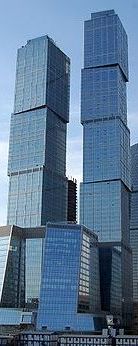
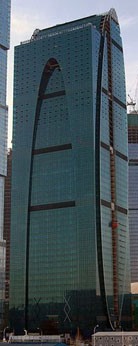
Following the end of the Soviet Union building controls were at long last abolished. The 1990s saw some turbulent economic times, but as time progressed and money started to flow in from Russia’s great oil and commodity wealth, modern architecture also started to appear at an ever quickening rate. One of the best examples of modern architecture is the Moscow International Business Center as seen in the photos.

